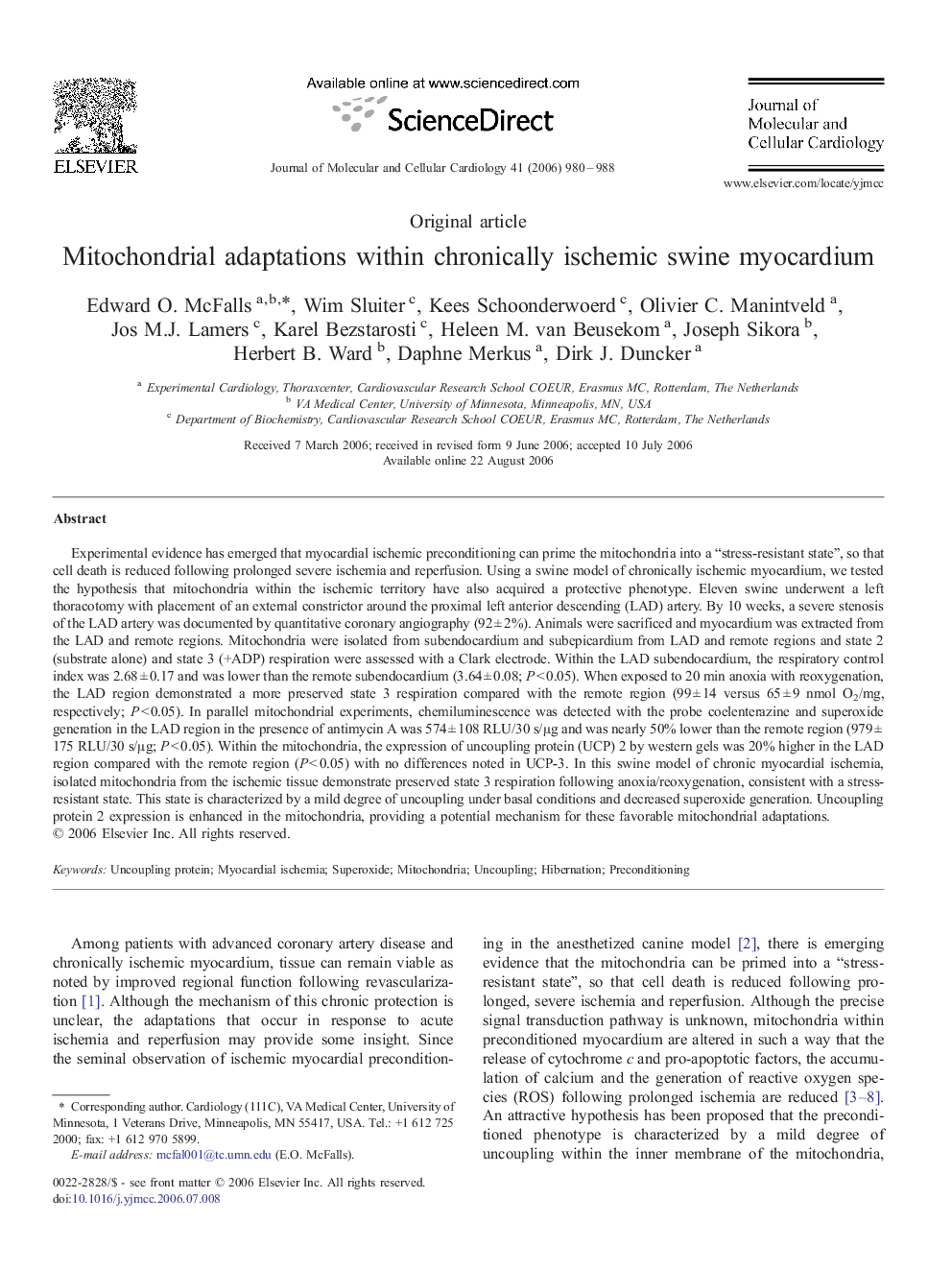| Article ID | Journal | Published Year | Pages | File Type |
|---|---|---|---|---|
| 2192196 | Journal of Molecular and Cellular Cardiology | 2006 | 9 Pages |
Experimental evidence has emerged that myocardial ischemic preconditioning can prime the mitochondria into a “stress-resistant state”, so that cell death is reduced following prolonged severe ischemia and reperfusion. Using a swine model of chronically ischemic myocardium, we tested the hypothesis that mitochondria within the ischemic territory have also acquired a protective phenotype. Eleven swine underwent a left thoracotomy with placement of an external constrictor around the proximal left anterior descending (LAD) artery. By 10 weeks, a severe stenosis of the LAD artery was documented by quantitative coronary angiography (92 ± 2%). Animals were sacrificed and myocardium was extracted from the LAD and remote regions. Mitochondria were isolated from subendocardium and subepicardium from LAD and remote regions and state 2 (substrate alone) and state 3 (+ADP) respiration were assessed with a Clark electrode. Within the LAD subendocardium, the respiratory control index was 2.68 ± 0.17 and was lower than the remote subendocardium (3.64 ± 0.08; P < 0.05). When exposed to 20 min anoxia with reoxygenation, the LAD region demonstrated a more preserved state 3 respiration compared with the remote region (99 ± 14 versus 65 ± 9 nmol O2/mg, respectively; P < 0.05). In parallel mitochondrial experiments, chemiluminescence was detected with the probe coelenterazine and superoxide generation in the LAD region in the presence of antimycin A was 574 ± 108 RLU/30 s/μg and was nearly 50% lower than the remote region (979 ± 175 RLU/30 s/μg; P < 0.05). Within the mitochondria, the expression of uncoupling protein (UCP) 2 by western gels was 20% higher in the LAD region compared with the remote region (P < 0.05) with no differences noted in UCP-3. In this swine model of chronic myocardial ischemia, isolated mitochondria from the ischemic tissue demonstrate preserved state 3 respiration following anoxia/reoxygenation, consistent with a stress-resistant state. This state is characterized by a mild degree of uncoupling under basal conditions and decreased superoxide generation. Uncoupling protein 2 expression is enhanced in the mitochondria, providing a potential mechanism for these favorable mitochondrial adaptations.
